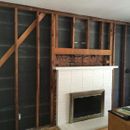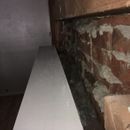Fireplace Air Sealing
I’m currently insulating our single level home in coastal California (95062). We had no insulation in the walls so I’m excited to get some rockwool in there.
When taking down the drywall around the fireplace, I could feel air coming through the brickwork and in a few spots I am able to even push a pencil all the way through into the chimney.
What is the best way to airseal the bricks? (fireproof sealant/foam, mortar?) From reading other posts on GBA it seems as though I should not add any insulation between the brick and interior drywall (even rockwool) which is too bad.
GBA Detail Library
A collection of one thousand construction details organized by climate and house part











Replies
Bump for visibility.
Your situation is not entirely clear, but based on the info you posted, this is what it MAY be:
1. You have decorative fireplace brick facing the inside of your living room. This appears to be solid brick or mortar with no gaps.
2. You removed the interior gypsum, and behind the decorative fireplace is the masonry structure that surrounds the fireplace flue. You feel exterior air coming through gaps in that masonry structure. This air is likely coming in either from above or below. Your brick chimney should have a flue inside through which the smoke from the fireplace rises. There is often a gap at the top between the round or oval flue and the rectangular chimney. You should check up there to be sure it is sealed from rodents being able to get in.
3. The portion of the masonry structure behind the finished wall appears to be sloppily built. The gaps at which you feel the air coming through are between the bricks where mortar is missing.
If the above is accurate, I would point up the masonry with new mortar. It does not need to be pretty, it just needs to be solid and airtight.
I suspect you also have air infiltration between the framing and the brick, because there is probably not exterior sheathing at the locations where there is brick - ie the brick sticks out past the plane of the siding. If that is the case, after pointing up all the brick, I would be inclined to air seal the gaps between the wood and the brick. If they are small enough you can buy high temp (600 degree) sealant at the big box and use that. If the gaps are larger, you can do it with canned spray foam. Others on here may have a reason that is not a good idea/
Hi CL,
Thanks for the reply. The bricks with the sloppy mortar were uncovered after removing drywall in front of it. Item #3 you listed be describes my situation and I could see using mortar making the most sense. Basically - just do it how it should have been done in the first place.
I'll consider the spray foam for areas I can't really get into.